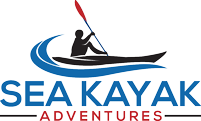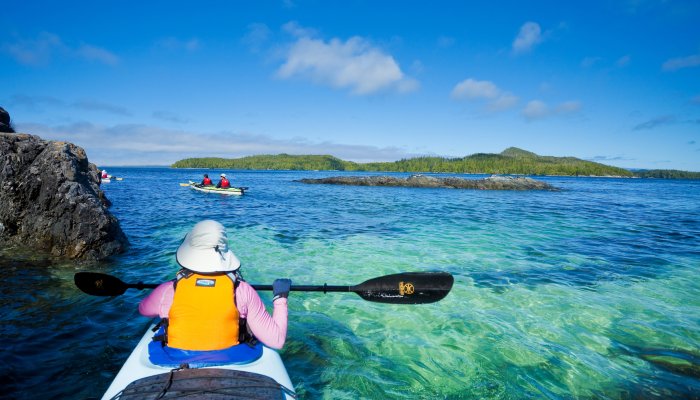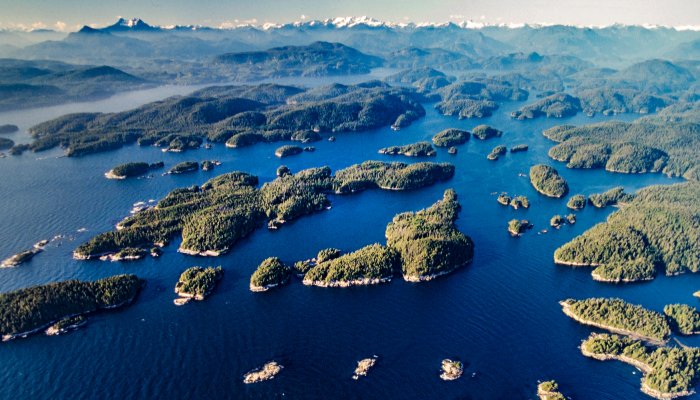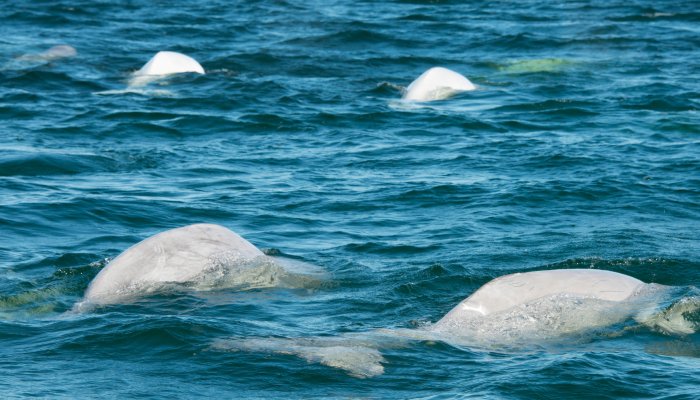“Forward stroke into the eddy behind the rock, point the bow into the 8 knot current and a solid sweep stroke on the left and then paddle with everything I’ve got, throw a bow draw (duffek stroke) on the right and catch the next eddy to rest for a moment. A few well planned forward strokes back into the surging current, on edge I surf around to the next eddy…”
This may sound like river kayaking lingo, but in fact I'm referring to the nine-mile/hour current that happens every day as the tides ebb and flow in and out of the Puget Sound through Deception Pass. And although we don’t get currents that strong in Baja, it is still a great place to hone in on my skills before teaching an ACA (American Canoe Association) Paddling Skills course to our Baja California sea kayaking guides.
Sea kayaking can be every bit as demanding as paddling on the river, if not more so. And a solid knowledge of paddling technique, form, and rescues is just as important. Guides are always excited to get out on the water to learn new skills or practice their technique.
We began our course on Playa Ligui in Bahía de Loreto, near a few of the desert island gems we paddle to on our Sea of Cortez kayaking tours. The wind cooperated and we spent the day practicing and refining our paddle strokes and form. Many of the guides pushed their kayaks to the limit, and we had more than a few unintentional capsizes. All part of the learning process!
On day two, we headed back out to Playa Ligui to start working on rescues. There are several rescue techniques a sea kayaker needs in their tool kit. The key is knowing which technique to use in different situations. We started off with the T-Rescue - angling the capsized kayak at a 90-degree angle, and then dumping the water out by lifting up the bow - and the waves were already getting too big to do this rescue safely. We continued practicing with the TX rescue, Scoop rescue, and Side-by-Side rescue before lunch.
By lunch time the northerly winds had picked up to about nine knots, not very conducive to teaching and learning. ROW guide, Alejandro Mañaga, suggested we paddle around the point to the south where we would be in the protected bay called Ensenada Blanca. After an exciting paddle through three- to four-foot waves we arrived in a white sandy bay with almost flat water. A perfect example of how local topography can affect conditions!
The next day we finished up the course with theory on chart reading and course plotting. There’s a lot to think about when planning an excursion in the ocean. Tides, winds, currents, distance, and group speed all play into the decision making process guides must consider while leading trips. We plotted example courses using charts and compasses while planning for all these variables.
That night, we celebrated our new learning in classic Mexican style, with tacos de asada and ricas salsas, and plenty of good company at the guide house in Loreto. I look forward to future training courses with the guides in Baja who are always eager to learn and share their knowledge as well.



